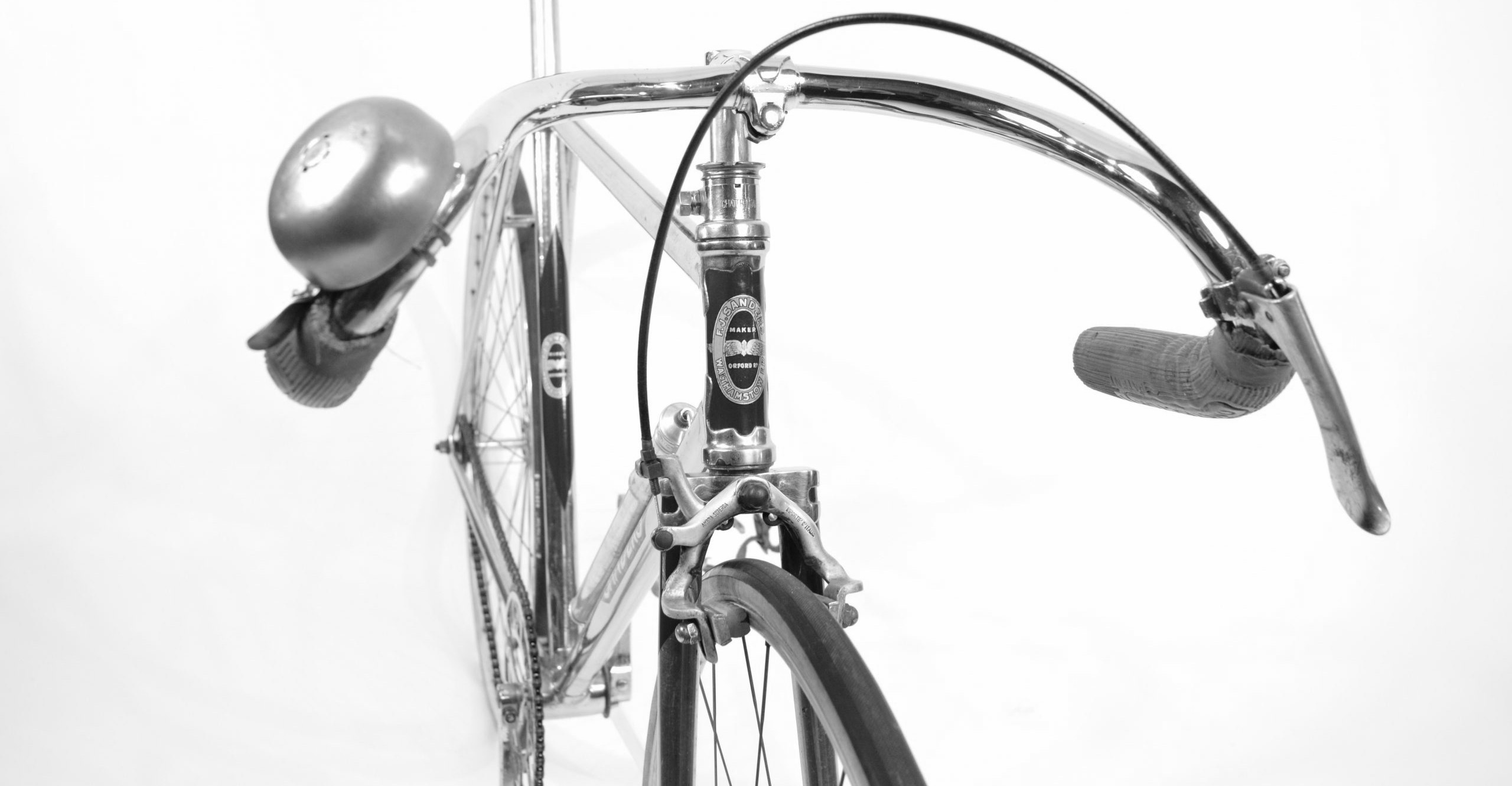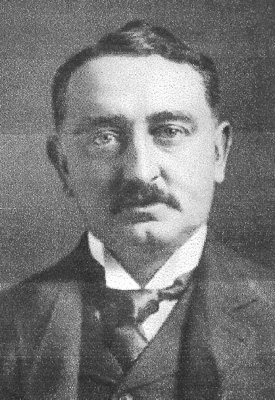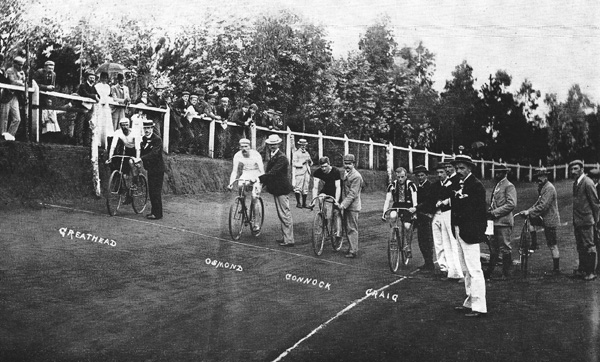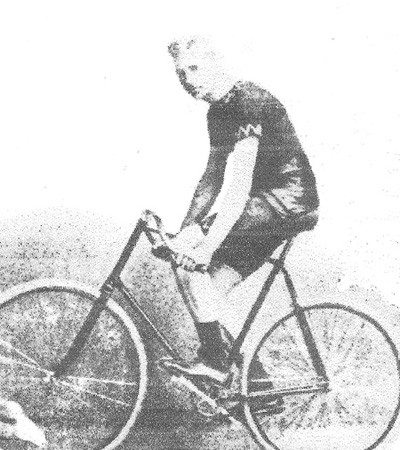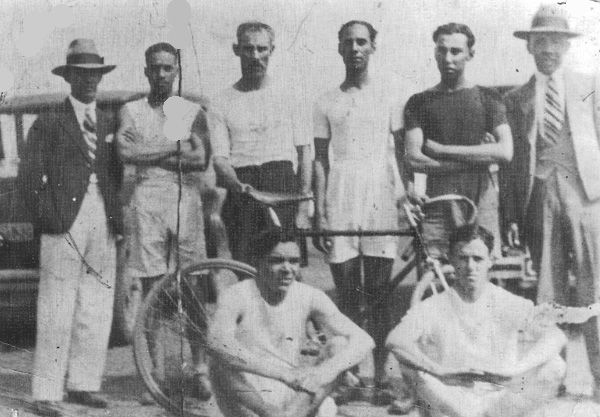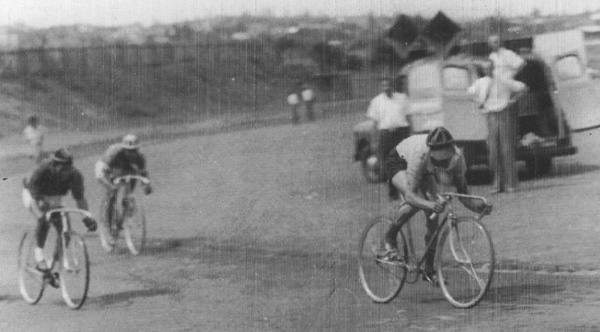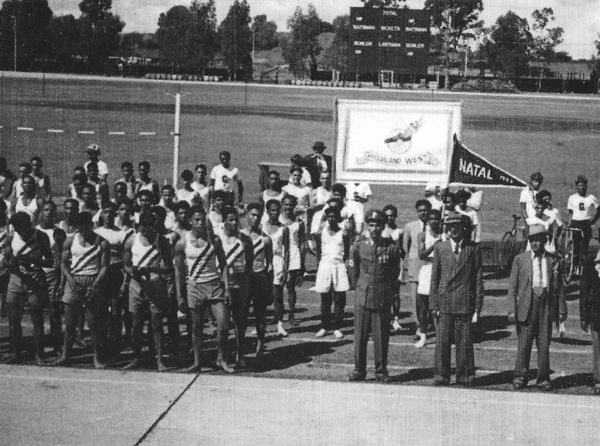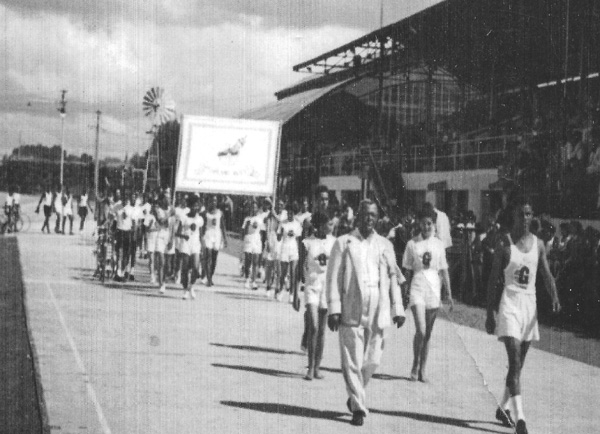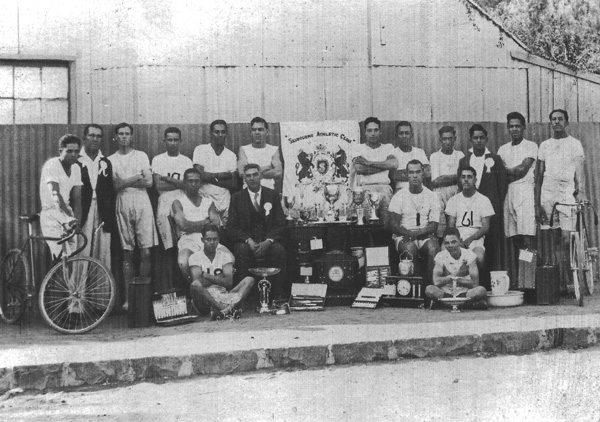20th century track racing in 'Diamond City'
Posted: Sunday 16th August 2020
Kimberley’s iconic De Beers outdoor cycling and athletics stadium, dating from the 1920s, no longer exists. It became increasingly dilapidated in the late 1900s and was finally demolished in the early 2000s.
For most of the 20th century, during which racial segregation was the norm in South Africa in all spheres including sport, the De Beers Stadium figured prominently as a venue for competitive track racing amongst White cyclists. Recently, however, it has come to light that the stadium simultaneously also played an important role in the development of track racing amongst Coloured cycling enthusiasts.
In South Africa back then the use of the same sporting facilities by people of different racial backgrounds, albeit separately from one another, was the exception rather than the rule. Why the De Beers Stadium was distinctive in this regard only becomes clear when the important role played by the De Beers organisation in the history of Kimberley is appreciated.
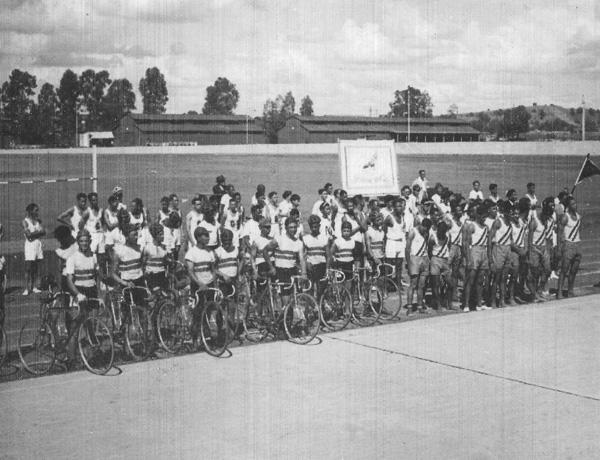
Origins: Kimberley, De Beers and cycling in South Africa
Kimberley, situated in the semi-arid Northern Cape region known as ‘Griqualand West’, is nearly 1 000 kilometres (620 miles) inland from Cape Town and lies at an altitude of 1 220 metres (4 000 feet). The area was first settled by the Griqua people in the late 18th/early 19th centuries. The Griquas were originally an Afrikaans-speaking rural people of mixed European settler and indigenous African ancestry who had trekked into the area from the southern Cape and who came to be called ‘Coloured’ people.
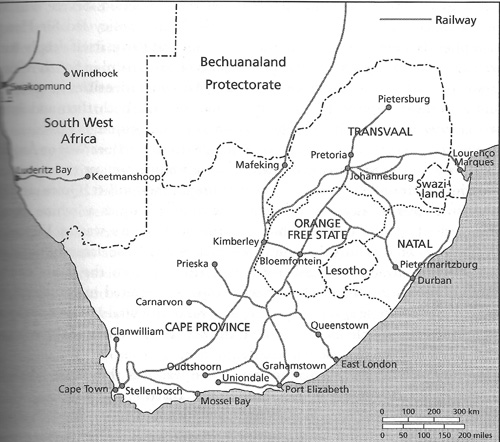
In 1866, the first significant diamond deposit was discovered in the region’s Hopetown district. This precipitated an initial ‘rush’ of fortune seekers, both local and foreign, to the area. Then, in 1871, a huge deposit of diamonds was found in a volcanic geological pipe of ‘blue ground’ on the farm of the De Beer brothers some 125 kilometres north of Hopetown. This led to a new, even greater ‘diamond rush’ and the consequent mushroom growth of a mining camp on the site. In 1877 the whole Griqualand district was annexed by the British Cape Colony and the new mining camp was named ‘Kimberley’ in honour of the then British colonial secretary, the Earl of Kimberley. By 1878, Kimberley had a population of some 40 000 inhabitants and municipal government was instituted there in the same year. In 1885, the railway linking Kimberley to Cape Town was completed, serving to catapult the town and with it South Africa into the modern era.
Cecil John Rhodes (1853-1902)
A young Cecil John Rhodes, who had originally immigrated to South Africa from Britain for health reasons, arrived in Kimberley in the 1870s. He established the De Beers Diamond Mining Company there in 1880 and then in 1888, together with a group of associates, formed De Beers Consolidated Mines Ltd. This organisation rapidly absorbed all the diamond mining sites in both Kimberley and its environs, dominating the area.
Simultaneously with these dramatic developments, which were shortly followed by the discovery of massive gold deposits in the Transvaal in the 1880s, the bicycle in its several evolutionary forms arrived in South Africa. Cycling clubs soon formed in South African towns and cities and racing was organised on tracks established in numerous urban centres. In keeping with the discriminatory racial conventions then already firmly in place, from the outset both these cycling clubs and the track racing competitions remained the preserve of White people.
Such was the popularity and enthusiasm for this track racing in the urban centres in the late 1800s that, in 1893, a group of Johannesburg mining magnates sponsored a top young local White cyclist, Laurens Meintjies, to travel to compete in the first official World track championships in Chicago, USA. Meintjies promptly won the long distance human paced ‘stayers’ world title there, while the world sprint title was won by the American, A.A. Zimmerman.
After setting various long distance human paced track records in the United States, Meintjies returned to South Africa a sporting hero. His achievements were instrumental in the establishment of cycling tracks and expanding the sport’s popularity in numerous towns and cities in the last decade of the 19th century.
However, the outbreak of the South African War (1899-1902) between Britain and the Boer republics brought such matters to a halt. (Rhodes was one of the people trapped in Kimberley for four months when the town was besieged by Boer Forces in 1899). Despite a post war revival of the sport in the early 1900s, it was only in the 1920s, in the aftermath of World War I, that track cycle sport began to flourish once again amongst the White population nationwide.
Establishment of the De Beers Stadium
In the mid-1920s, De Beers Consolidated Mines sponsored the construction of an outdoor athletics and cycling stadium complete with spectator facilities on a site at the Kimberley show grounds, located close to the organisation’s headquarters. In 1926 the foundation stone for the new sports arena, to be named ‘The De Beers Stadium’, was laid by the then deputy chairman of De Beers. He was the Anglo-Irishman, Vere Ponsonby, who was the 9th Earl of Bessborough and who was subsequently appointed the Governor General of Canada.
The new state-of-the-art De Beers Stadium incorporated an oval athletics track of 440 yards in length which was enveloped by a British-style, shallow banked cycling track measuring 550 yards in circumference. The venue was officially opened in 1927 and immediately attracted the country’s leading athletes and cyclists to competitions there. With the De Beers organisation controlling access to the stadium, sportspeople of colour could potentially seek permission to use the facility. This provided the Coloured sporting community with an opportunity which was denied them elsewhere.
Then, in 1939, the stadium’s cycling track was upgraded by the laying of a cement surface, which served to further enhance its reputation as being the fastest track in the country. (Tracks elsewhere were either compacted earth or tarmac surfaced, which made them comparatively sluggish). Legend has it that the cement for the new De Beers surface was mixed with Kimberley’s famous diamond-bearing ‘blue ground’ and therefore that cyclists were literally racing over hidden diamonds. It has been claimed that the final deterioration of the track in the early 2000s was hastened by illegal mining activities under the bankings in search of forgotten gems.
The De Beers Stadium’s two cycle sport traditions
In the course of its long history, the policy decision by the De Beers management to allow both White and Coloured sportspeople independent access to the stadium served to create two distinct racing traditions there, the one consisting of White cyclists, the other of Coloured cyclists. Of the two, the White cycling tradition is by far the better recorded and archived. Until recently, the stadium’s Coloured cycling tradition remained as ‘oral history’ and thus largely unrecognised. However, the discovery and publication of a tranche of rare photographic images of Kimberley’s Coloured sportspeople, including of its cyclists, reveals the existence of a vibrant sporting tradition within the Coloured community during the 20th century. It is one which deserves to be recognised and recorded.
In what follows, first highlights in the De Beers Stadium’s White cycling history are briefly summarised and then the focus is turned to its Coloured cycle sport tradition as reflected in the images which survive.
White competitive cycling at the De Beers Stadium
In 1929, two years after the stadium’s completion, the national White athletics and track cycling championships were held there for the first time. In those days, White athletics and cycling were jointly administered by the South African Amateur Athletics and Cycling Association (SAAA&CA). Over the next fifty years up until 1979, these national championships were staged at the De Beers Stadium on no fewer than eight occasions, including successively in 1949 and 1950. After World War II, the Kimberley Grand Prix became an annual event which attracted large crowds to watch the country’s top White match sprinters compete.
However, the undoubted high point in the history of this cycling tradition at Kimberley’s De Beers Stadium was reached in January 1948. This was when the track omnium ‘test match’ was held there between the first British NCU track team to visit the country and a selected South African SAAA&CA national team.
The six-man British team of riders, who were preparing for the London Olympics in July 1948, consisted of Lew Ponds (captain), Alan Bannister, Tommy Godwin, Ron Meadwell, Dave Ricketts and Ian Scott. The team had begun its extended racing tour in Bulawayo, Rhodesia (now Zimbabwe), and then proceeded to triumph over locals on tracks in all of South Africa’s major cities. Finally, in Kimberley, the all-conquering British trackmen were faced by an eight-man White ‘Springbok’ track squad consisting of Ronnie Benvenuti, Stan Chelin, Ronnie Fairall, Jan Huyshamer, ‘Ginger’ Olivier, Johnny Ramsay, Wally Rivers and Eddie Scholtz.
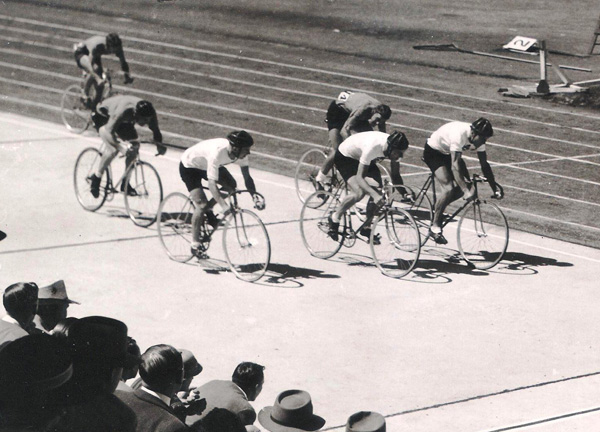
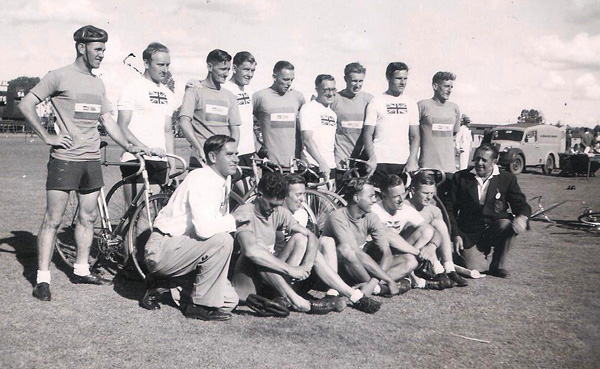
The international omnium ‘test’ consisted of five events: the quarter mile, one mile and five mile scratch events, a 1 000 metres individual time trial and a four man 4 000 metres team pursuit. The British riders won every event, ending with a final omnium tally of 33 points to the South African team’s meagre 6 points. It was a chastening experience for local White cycling and the British team returned to the UK by ship with high hopes of success at the 1948 London Olympics.
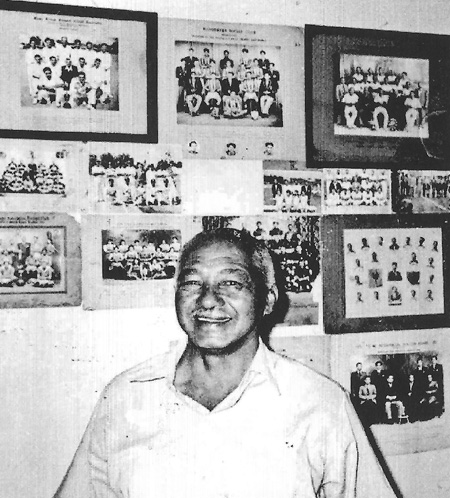
Coloured competitive cycling at the De Beers Stadium
In 2009, the Kimberley Africana Library published, McAnda’s Sport: A Photographic Collection, compiled by Kokkie Duminy, in a limited edition of 300 copies. It contains a total of 77 photographs of Coloured sportspeople and teams from Kimberley dating from the 20th century and drawn from a variety of sports, including cycling and athletics. (At the time, these two sports within the Coloured community were both controlled by the same administrative body). According to the book’s section devoted to Coloured cycling:
“The history of cycling in Kimberley is not well-recorded and only a few reports regarding cycling activities exist in the local press. (p.84)”
The collection of photographic images which are gathered together in the book belonged to Johnny McAnda (1917-1997), a leading Kimberley sportsman of his time. He excelled at cricket, and was vice-captain of the South African Coloured Cricket Association team which won an international tournament in 1953. In addition, he represented Griqualand West at rugby, soccer and tennis. He went on to operate a popular men’s barbershop in Kimberley for many years and his array of sporting photographs were displayed there. Over time the photographs suffered considerable wear and tear but, after their discovery by local historians, they were carefully restored by staff of the Kimberley Africana Library for publication in the book.
Coloured cycling in Kimberley in McAnda’s Sport: A Photographic Collection
In the book’s preface, it is stated that:
Regrettably, while in the process of research for this book, the paucity of records of the Coloured, Black and Indian sporting bodies became apparent and we have had to rely only on information given in the local press.
(McAnda’s Sport p.3)
However, four specific combined cycling and athletics meetings at the De Beers Stadium are identified in the book as a result of research undertaken into the Kimberley municipal records and reports contained in the local newspaper, The Diamond Fields Advertiser. Details of the four are:
1. The Griqualand West Coloured Amateur Athletic Club’s 21st annual Empire Day meeting held on 24th May, 1947.
2. The Griqualand West Coloured Amateur Athletic Club’s 23rd annual Empire Day meeting held on 24th May, 1949.
3. The Griqualand West Coloured Amateur Athletic Club’s Silver Jubilee (25th) Sports day in 1951.
4. The third South African Non-European Athletics and Cycling Championships held on 4th April, 1953.
What the first three events indicate is that track cycling (and athletics) had a long history amongst the Coloured community, dating back to 1926 when the De Beers Stadium was first built. The organisers of the 1947 event wrote to inform the mayor of Kimberley that:
Mr. Harry Oppenheimer, son of Sir Ernest Oppenheimer [chairman of De Beers Consolidated Mines], has kindly consented to take the salute of the March Past of Schools and athletes.(McAnda’s Sport, p.88)
The 1953 national championships were open to all South African cyclists and athletes of colour: Coloured, African and Indian. The ‘salute’ at the meeting’s opening was taken by Mr. C.H. Beck, secretary of De Beers. According to a local press report:
“Mr. W.C. Meyer, president of the South African Amateur Athletic and Cycling Board of Control thanked Mr. and Mrs. Beck and the public for their support.”
(McAnda’s Sport, p.88)
Cyclists who excelled at the championships were Henry Sibisi from Natal province, J. Goliath and H. Beukes of Griqualand West, and C. Green of Boland (Western Cape).
The images which follow all come from McAnda’s Sport: A Photographic Collection and are reproduced here together with their original captions in the book.
Cycling in the South African Coloured community in the 1970s
In 1974, when apartheid was at its height in the country, the non-racial but predominantly Coloured South African Cycling Association (SACA), held its annual national road championships in the east coast province of Natal. The race began in the coastal village of Umzinto and climbed up over a very hilly 160 kilometre long course to finish at Thornville in the inland village of Richmond. Starting almost at sea level, the race finished at an altitude of 2,500 feet. The official race programme (see below) contained a message from the SACA president, Edgar A. Rhoda. As the earlier group photograph clearly shows, he had long been involved in the administration of Coloured cycling, having been active in Kimberley some twenty years earlier.
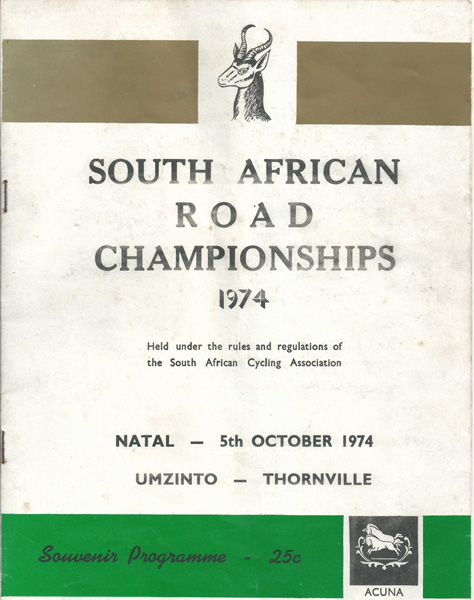
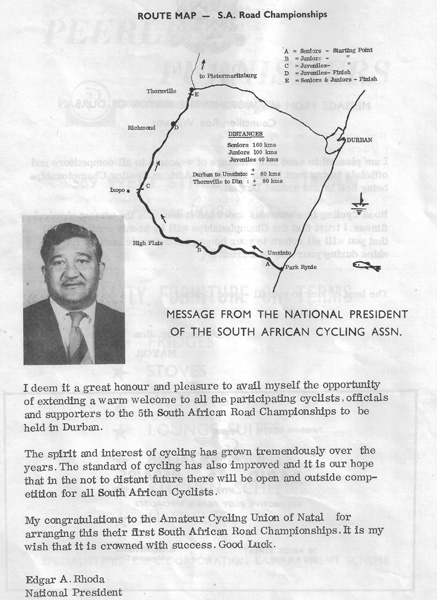
“It is our hope that in the not too distant future there will be open and outside competition for all South African cyclists.”
The 1974 event was divided into senior (160km), junior (100km) and juvenile (40km) events, with competitors being drawn a number of different provinces: Boland, Border, Eastern Province, Griqualand West, Natal and Western Province plus various clubs. The senior event was won by Peter Nicholson (Yorkshire CC, Cape), the junior title by Ernest Hartell (Natal) and the juvenile crown by Roland Isaacs (Natal).
Edgar Rhoda’s hope for ‘open and outside competition’ in South African cycle sport was not fully realised until 1994 when apartheid was finally scrapped. That he and his associates continued to promote the sport particularly amongst the Coloured community both in Kimberley and beyond deserves to be recorded and recognised. Equally, the important role which the De Beers Stadium played in facilitating this should not be forgotten.
References
a. Book
Kimberley Africana Library, compiled by Kokkie Duminy (2009). McAnda’s Sport: A Photographic Collection. Kimberley: Kimberley Africana Library Friends.
b. Website
Waters, Geoff, ‘Competitive cycling in apartheid’s shadow’ in ‘Reminiscences’, www.classiclightweights.co.uk.
___________, ‘South Africa versus Great Britain international track omnium racing, 1948’ in Lightweight Extras, www.classiclightweights.co.uk.
Posted: Sunday 16th August 2020
This article appears in the following categories.
Upcoming Events
Whether you are looking for a gentle social meet up, or a 100-mile ride browse the community’s upcoming events and plan your next weekend outing.
